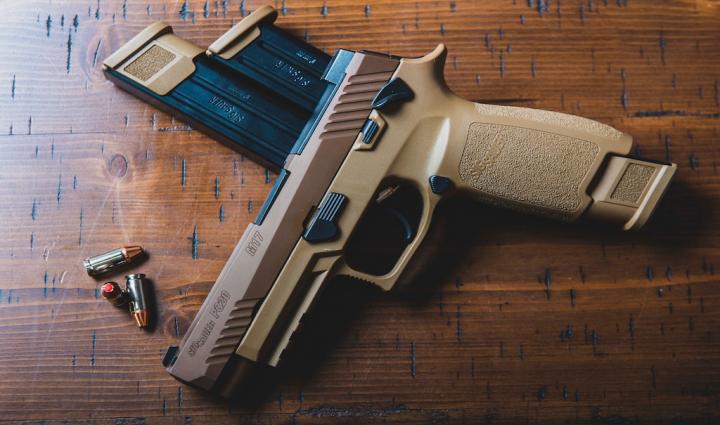
Credit: Photo by Derwin Edwards from Pexels
EAST LANSING, Mich. – The United States currently averages 20 mass shootings per year. Researchers from Michigan State University measured the extent to which mass shootings are committed by domestic violence perpetrators, suggesting how firearm restrictions may prevent these tragedies.
Under federal law, when people are convicted of domestic violence misdemeanor crimes, they are prohibited from purchasing and possessing guns for the rest of their lives. However, holes in the system allow potential mass shooters to slip through the cracks.
“We found that 38% of known mass shooters had a history of domestic violence, either known to the justice system or mentioned in the media,” said April Zeoli, associate professor of criminal justice at MSU and lead author of the research. “Very few of those who committed mass shootings seemed to have firearm restrictions due to domestic violence; the fact that some of them had those restrictions suggests that we are not actually preventing purchase or possession of a gun as well as we could or need to be.”
Zeoli explained that some cases of domestic violence never result in firearm restrictions because law enforcement is never involved, because the cases were not referred to prosecutors, because the charges that were filed didn’t qualify for firearm restrictions or because the case didn’t meet a relationship requirement for the gun restrictions to be applied.
“In more than 20 states, a person convicted of misdemeanor domestic violence against a dating partner will not be restricted from firearm access – you must have lived together, be married or have a child together to qualify for the restriction,” Zeoli said.
The research, published in Criminology & Public Policy, looked at the nearly 90 mass shootings that took place between 2014 and 2017. Zeoli and co-author Jennifer Paruk cross-checked four separate mass shooting databases – compiled by Every Town for Gun Safety, USA Today, Gun Violence Archives and Mother Jones – and then used publicly available criminal records to see what other criminal charges the shooters had against them.
“The public sees media reports of mass shootings happening in movie theaters, schools, night clubs and beyond – these are the ones that keep us all up at night,” Zeoli said. “But the majority of these mass shootings involved intimate and family member victims.”
The researchers pinpointed ways – called “exit points” in the paper – that firearm restrictions failed to prevent a shooter from buying a gun, which include purchases made through private sales and a failure to report gun disqualifications to the criminal background check system.
“In the case of the Sutherland Springs Baptist church shooting, the shooter did in fact qualify for a gun restriction under federal law because of domestic violence,” Zeoli said. “However, the conviction was in military court, and the military never sent the conviction records to the background check system; so, when he went to buy a gun, nothing showed up on his record.”
Zeoli hopes that the findings inspire both the public and lawmakers to learn about their states’ laws, as well as the exit points she and Paruk found that can lead to a gun landing in the hands of the wrong type of person.
“The image you get of mass shootings in the media isn’t always the full picture,” Zeoli said. “People should determine, in their state, whether it may be possible for people convicted of domestic violence to obtain a firearm. Many of those exit points can be closed through legislation and better implementation of the law. My feeling – and my hope – is that we’ll continue to see states work to implement restrictions to dangerous individuals from gaining access to guns and prevent gun violence from happening.”
###
(Note for media: Please include a link to the original paper in online coverage: https:/
Michigan State University has been working to advance the common good in uncommon ways for 160 years. One of the top research universities in the world, MSU focuses its vast resources on creating solutions to some of the world’s most pressing challenges, while providing life-changing opportunities to a diverse and inclusive academic community through more than 200 programs of study in 17 degree-granting colleges.
For MSU news on the Web, go to MSUToday. Follow MSU News on Twitter at twitter.com/MSUnews.
Media Contact
Caroline Brooks
[email protected]
517-432-0920
Original Source
https:/
Related Journal Article
http://dx.




